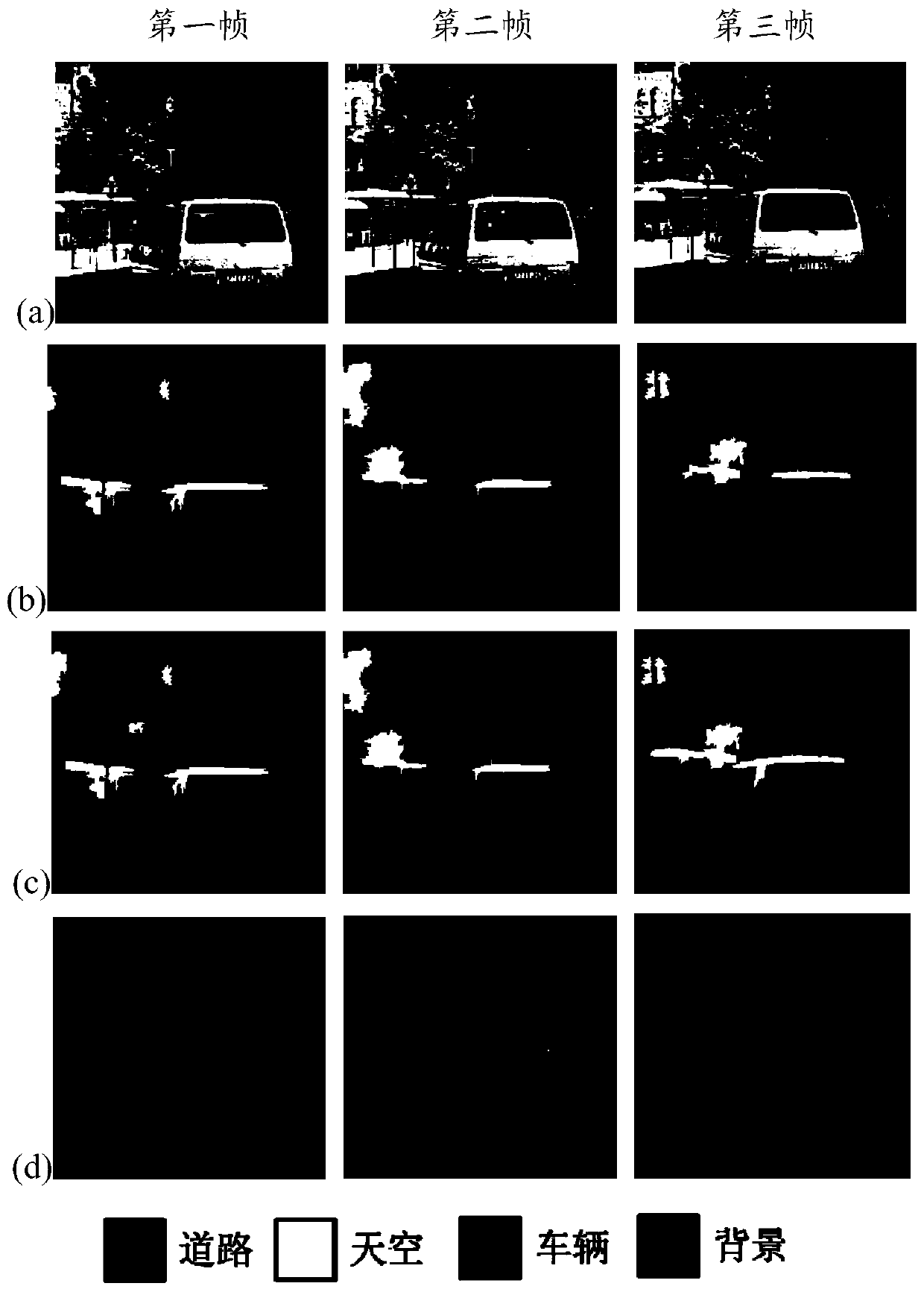Image Sequence Classification Method Based on Mixed Graph Model
A technology of image sequence and mixed graph, applied in the field of computer vision, can solve problems such as image sequence labeling that has not yet been applied
- Summary
- Abstract
- Description
- Claims
- Application Information
AI Technical Summary
Problems solved by technology
Method used
Image
Examples
Embodiment 1
[0119] Treat labeled image sequences figure 1 (a) Using the simple graph model and the method of the present invention to process respectively, it can be seen from the result comparison diagram that the method of the present invention effectively improves the accuracy and timing consistency of the sequential image category labeling.
Embodiment 2
[0121] Image to be detected figure 2 (a) Using the simple graph model and the method of the present invention to process respectively, it can be seen from the result comparison diagram that the method of the present invention effectively improves the accuracy and timing consistency of the sequential image category labeling.
[0122] Table 1 is the accuracy rate (Prec.) on the KITTI data set by using the simple graph model and the method of the present invention, the recall rate (Rec.), the F standard (FM) evaluation numerical results, the higher the value, it shows that the method obtains The labeling results are better. It can be seen from Table 1 that the method of the present invention achieves better results in quantitative indicators than the simple graphical model method.
[0123] Table 1 Comparison data of image sequence experiment results
[0124]
PUM
 Login to View More
Login to View More Abstract
Description
Claims
Application Information
 Login to View More
Login to View More - R&D
- Intellectual Property
- Life Sciences
- Materials
- Tech Scout
- Unparalleled Data Quality
- Higher Quality Content
- 60% Fewer Hallucinations
Browse by: Latest US Patents, China's latest patents, Technical Efficacy Thesaurus, Application Domain, Technology Topic, Popular Technical Reports.
© 2025 PatSnap. All rights reserved.Legal|Privacy policy|Modern Slavery Act Transparency Statement|Sitemap|About US| Contact US: help@patsnap.com



